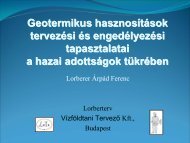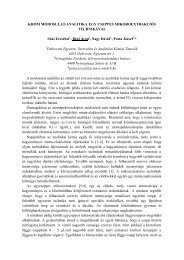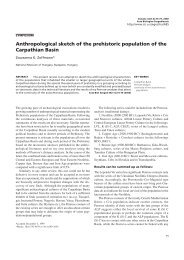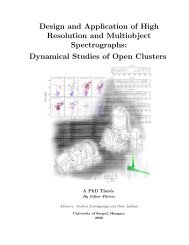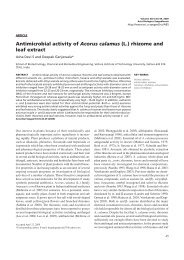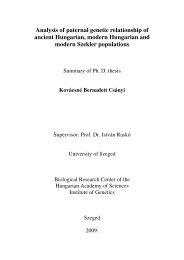principles of extraction and the extraction of semivolatile organics ...
principles of extraction and the extraction of semivolatile organics ...
principles of extraction and the extraction of semivolatile organics ...
You also want an ePaper? Increase the reach of your titles
YUMPU automatically turns print PDFs into web optimized ePapers that Google loves.
66 <strong>principles</strong> <strong>of</strong> <strong>extraction</strong><br />
In this instance, <strong>the</strong> value for D would be substituted for KD in equation<br />
(2.29).<br />
The formula for expressing repeated <strong>extraction</strong>s is<br />
% RX ¼ 1<br />
1<br />
1 þ KDðVE=VOÞ<br />
n<br />
100 ð2:32Þ<br />
Applying equation (2.32) to <strong>the</strong> previous calculation having three successive<br />
multiple <strong>extraction</strong>s where KD ¼ 5, VE ¼ 50 mL, VO ¼ 1 L, <strong>and</strong> n ¼ 3, <strong>the</strong><br />
cumulative recovery is calculated to be 48.8% (Table 2.4).<br />
Repeated <strong>extraction</strong>s may be required to recover <strong>the</strong> analyte su‰ciently<br />
from <strong>the</strong> aqueous phase. Neutral compounds can have substantial values <strong>of</strong><br />
KD. However, organic compounds that form hydrogen bonds with water,<br />
are partially soluble in water, or are ionogenic (weak acid or bases) may have<br />
lower distribution coe‰cients <strong>and</strong>/or pH-dependent distribution coe‰cients.<br />
Additionally, <strong>the</strong> sample matrix itself (i.e., blood, urine, or wastewater) may<br />
contain impurities that shift <strong>the</strong> value <strong>of</strong> <strong>the</strong> distribution coe‰cient relative<br />
to that observed in purified water.<br />
Investigation <strong>of</strong> <strong>the</strong> principle <strong>of</strong> repeated <strong>extraction</strong>s demonstrates that:<br />
The net amount <strong>of</strong> analyte extracted depends on <strong>the</strong> value <strong>of</strong> <strong>the</strong> distribution<br />
coe‰cient.<br />
The net amount <strong>of</strong> analyte extracted depends on <strong>the</strong> ratio <strong>of</strong> <strong>the</strong> volumes<br />
<strong>of</strong> <strong>the</strong> two phases used.<br />
More analyte is extracted with multiple portions <strong>of</strong> extracting solvent<br />
than with a single portion <strong>of</strong> an equivalent volume <strong>of</strong> <strong>the</strong> extracting<br />
phase.<br />
Recovery is independent <strong>of</strong> <strong>the</strong> concentration <strong>of</strong> <strong>the</strong> original aqueous<br />
sample.<br />
2.2.2. Methodology<br />
The LLE process can be accomplished by shaking <strong>the</strong> aqueous <strong>and</strong> organic<br />
phases toge<strong>the</strong>r in a separatory funnel (Figure 2.13a). Following mixing, <strong>the</strong><br />
layers are allowed to separate. Flow from <strong>the</strong> bottom <strong>of</strong> <strong>the</strong> separatory funnel<br />
is controlled by a glass or Teflon stopcock <strong>and</strong> <strong>the</strong> top <strong>of</strong> <strong>the</strong> separatory<br />
funnel is sealed with a stopper. The stopper <strong>and</strong> stopcock must fit tightly<br />
<strong>and</strong> be leakpro<strong>of</strong>. Commonly, separatory funnels are globe, pear, or cylindrically<br />
shaped. They may be shaken mechanically, but are <strong>of</strong>ten shaken<br />
manually.<br />
With <strong>the</strong> stopcock closed, both phases are added to <strong>the</strong> separatory funnel.<br />
The stopper is added, <strong>and</strong> <strong>the</strong> funnel is inverted without shaking. The stop-






